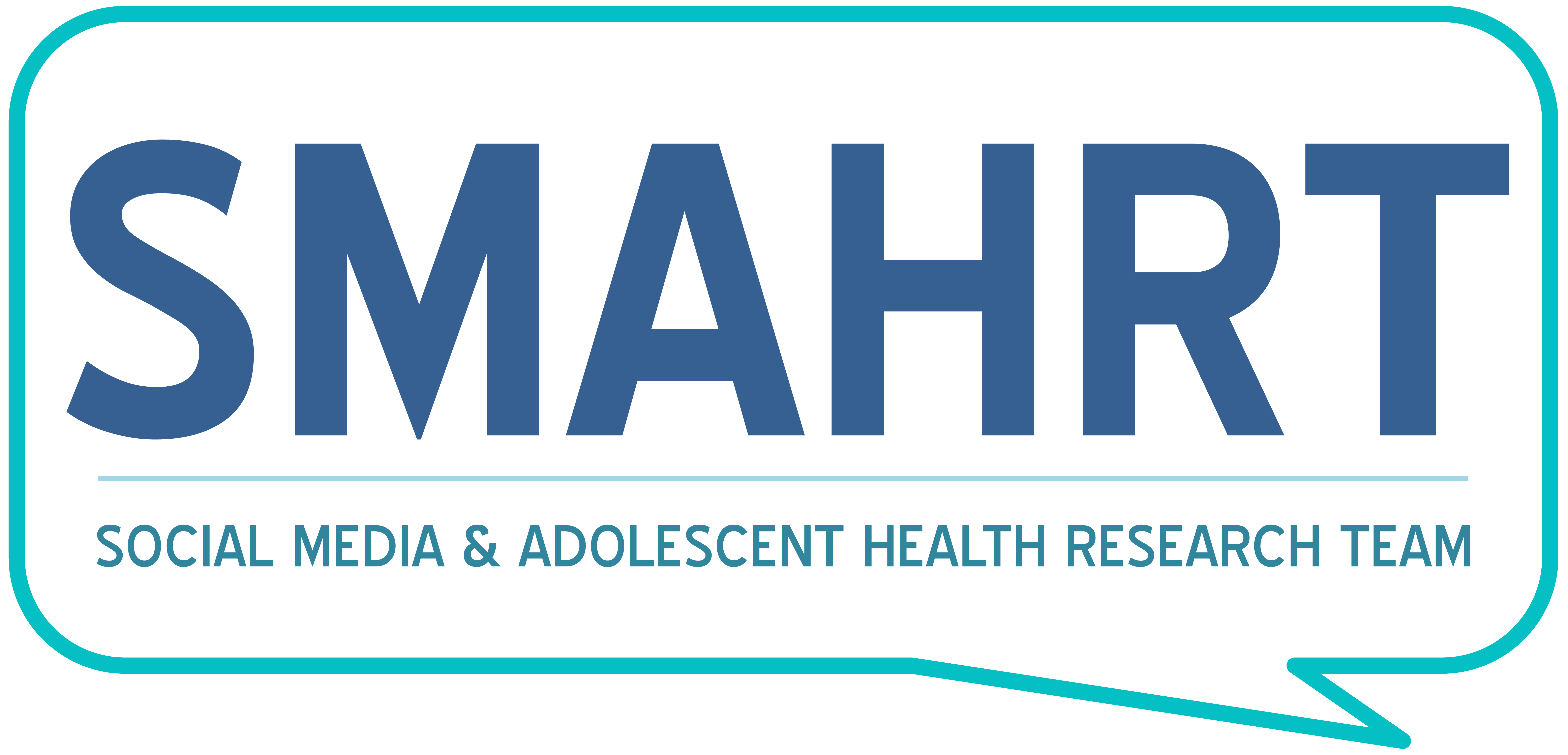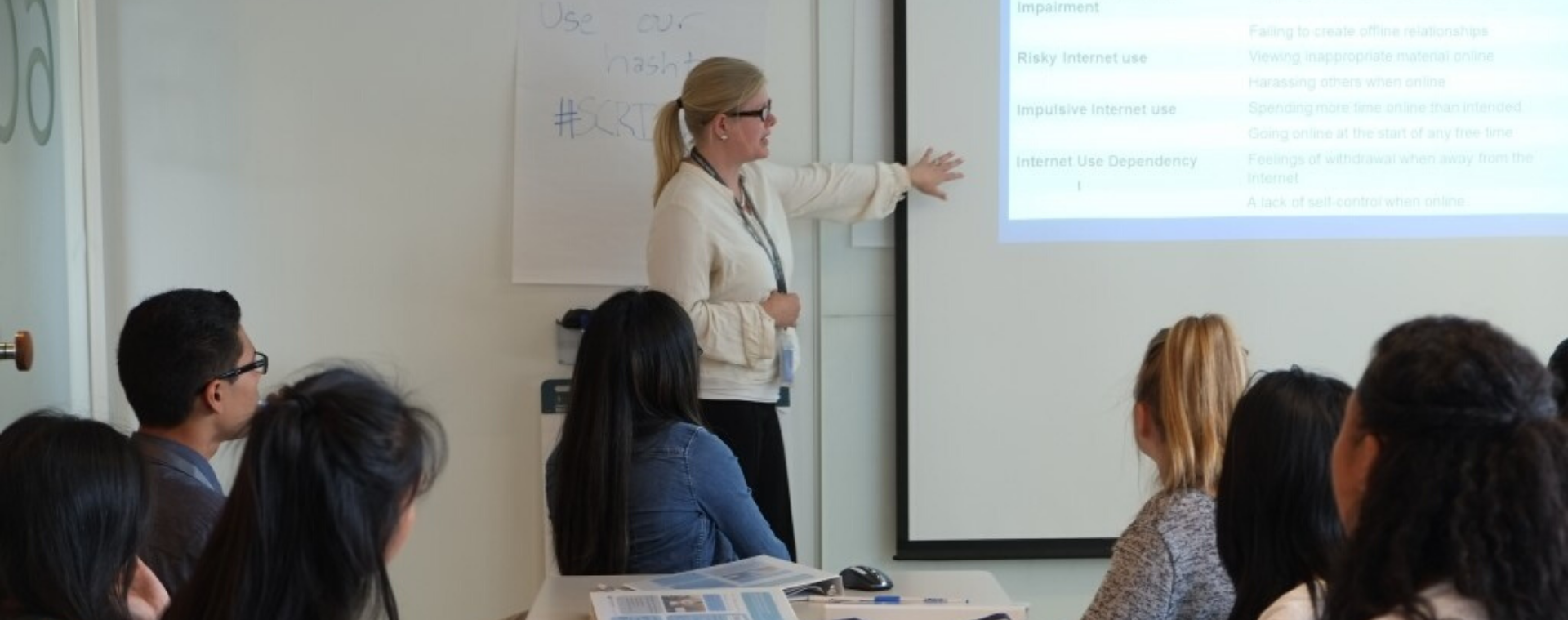Our SMAHRTies spend the majority of their time working on research to identify how to improve adolescent health through social media. Here’s a “behind the scenes” look at what happens before the research paper’s published.
Two of our SMARHTies were interested in the underground hashtags on Instagram and Twitter. Adrienne Ton researched the use of “#selfharmmm” on Instagram as a way to express or promote self-harm. Nina Suthamjariya, meanwhile, researched how the use of “#proana,” “#edrecovery,” “#thinspo,” and “#eatingdisorders” were used on Twitter to express or promote eating disorders. Originally, Instagram had elected to ban hashtags known to promote self-harm because the content associated with those hashtags violated the platform’s policies. However, Instagram recently changed its guidelines to allow users to express emotions associated with the hashtag “selfharmmm,” as long as the images themselves did not promote self-harm. Twitter, on the other hand, does not ban or provide advisories for any content, so users can express and promote risky behaviors like eating disorders without drawing administrator attention.
Both Ton and Suthamjariya found these underground hashtags can create a community among people who support risky behaviors like self-harm and disordered eating, but both SMAHRTies also found hashtag communities can support the recovery of individuals expressing these problematic behaviors. People turn to sites like Instagram and Twitter because it creates a safe space to connect with people that feel similarly to them, and it also gives them anonymity that cannot be found when talking with friends or family.
Using Instagram with the hashtag of “selfharmmm” creates an outlet for users to have the support system they want without it affecting their offline networks of family, friends, or doctors. The online relationships SMAHRT studied proved to be both helpful and harmful, depending on how these hashtags are used. Some Instagram “friendships” encouraged recovery from self-harm, but some users posted content that was triggering to people who self-harm. On Twitter, our SMAHRTies found specific trends and patterns between different hashtags. Hashtags like “#proana” were specifically for people that wanted support for being anorexic, but hashtags like “#edrecovery” supported the recovery of eating disorders and tried to help users stay healthy. Some hashtags, like, #eatingdisorders brought a mix of helpful and harmful messages.
One constant emerged from both Ton and Suthamjariya’s research: Social networking sites are not always bad, nor are they always good. Rather, these sites are a tool that can be used in myriad ways, depending on the intention of the user, a notion supported by much of SMAHRT’s research, hashtag-centric or not.

